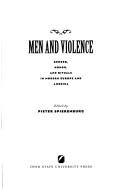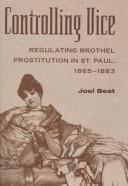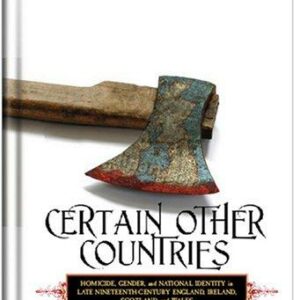Criminal Law (Justice Series)
$166.65
| Title | Range | Discount |
|---|---|---|
| Trade Discount | 5 + | 25% |
- Description
- Additional information
Description
For courses in Criminal Law
Brief. Affordable. Visual.
Criminal Law provides an affordable, thought-provoking look at criminal law that uses clear writing and eye-catching visuals to get your students straight to the important concepts. By focusing on the core concepts, students will gain true understanding of the material, without becoming overwhelmed with unnecessary information. The book’s conversation-starting pedagogy encourages active participation in learning, moving students beyond memorization by engaging them in the latest research findings and current events shaping the field.
Updated throughout, the Second Edition covers all of the latest hot-button issues in criminal law and includes interesting, fresh, and controversial cases. All of the existing Court Decision boxes are expanded so that instructors can assign them as case briefs or delve deeper into the cases in the classroom.
Criminal Law, Second Edition is also available via Revel™, an interactive learning environment that enables students to read, practice, and study in one continuous experience. Learn more.
Criminal Law provides a brief, affordable, visual introduction to the field
- Motivate students with engaging writing. The clear, easy-to-read, writing style is designed to tell a story about the criminal justice system. Students will be interested in the content, motivated to explore the topic further, and apply course content to everyday events.
- Appeal to visual learners. Engaging infographics, flow charts, pull-out statistics, and other visual elements flow with the text, provide context, and promote student engagement, recall, and understanding.
Provide the most current coverage possible. All chapters in the text reflect the most cutting-edge research in the field, including the latest statistics and the most current cases available at the time of publication.
- UPDATED: Help readers connect chapter material with current events. Chapter-opening stories are pulled directly from the headlines to give readers the most current view of criminal law possible. Updated or new stories are included in chapters 2, 4, 5, 9, and 13.
- EXPANDED: Deliberate course cases in the classroom. Court Decision boxes include interesting and relatable excerpts from real court decisions (either current or major Supreme Court decisions) so readers can examine instrumental court cases in greater depth and answer case analysis questions. This edition includes even more cases that go into greater detail so that instructors can examine these cases in the classroom or assign them as case briefs.
- Offer a contemporary take on criminal law. All of the latest hot-button issues in criminal law are covered, including recent controversial cases on the police use of force, cybercrime, terrorism, and more.
- Chapter 1: A new section on the practical meaning of verdicts is included toward the end of the chapter, as is a new section on editing cases for readability.
- Chapter 2: A new chapter-opening story is included as well as a new Court Decision, Glossip v. Gross, which is the 2015 Supreme Court case in regards to the death penalty. Figure 2.5 includes current data on the death penalty.
- Chapter 3: A new Court Decision explores mistake of fact, People v. Lawson.
- Chapter 4: A new chapter-opening story features the Michael Brown shooting in Ferguson, Missouri. Two new Court Decisions explore the castle doctrine and the defense of consent. A new section on federal deadly force policy is included and the deadly force section is expanded in light of recent events.
- Chapter 5: The chapter-opening story and Figure 5.5 are updated and a new Court Decision on sociological excuse, United States v. Le, was added.
- Chapter 6: A new figure summarizing modern and common law parties to a crime is included. The Complicity Limitations and Defenses section includes a new subsection on so-called nonproxyable offenses. A new Court Decision box toward the end of the chapter features a corporate vicarious liability case.
- Chapter 7: A new Court Decision on conspiracy, U.S. v. Soto, is included and the Court Decision highlighting U.S. v. Schiro was removed.
- Chapter 8: The section on physician-assisted suicide is updated and a new Court Decision on first-degree murder, Nibert v. Florida, on aggravating and mitigating circumstances is included.
- Chapter 9: A new chapter-opening story features allegations of cyberstalking in the scandal involving former CIA director and four-star general, David Petraeus, a case that continues to unfold. Court Decision boxes are expanded and a new stalking case is featured toward the end of the chapter.
- Chapter 10: A new Court Decision is included, United States v. Phillips, in which a computer science student hacked his own university’s computer system.
- Chapter 11: A Court Decision on identity theft, U.S. v. Zuniga-Arteaga, is included and statistics and data in relation to identity theft are updated.
- Chapter 12: In addition to being fully updated, the chapter features two new Court Decisions. The first, Helms v. State, involves the case of a man who was running an escort service and claimed to have no idea that prostitution was occurring. The second, United States v. Elie, involves violations of federal gambling laws. A section on gang activity is now included in the discussion of group criminality. Sections on sexting, polygamy, gambling, and drug laws are updated with the most recent developments.
- Chapter 13: The chapter begins with a new story featuring the 2015 terror attack in San Bernardino. The PATRIOT Act section includes the latest developments and a new section on the USA FREEDOM Act. A new Court Decision box features United States v. Walli, a sabotage case. A new section on additional methods for targeting offenses against the state is included toward the end of the chapter.
Encourage active participation through critical-thinking features and learning tools
- Promote critical thinking with contemporary examples. Your Decision boxes present students with a hypothetical scenario that puts them in the position of the judge, jury, prosecutor, or defense attorney, giving them an opportunity to apply chapter content.
- Easily supplement your course with the Instructor’s Manual. The Instructor’s Manual contains author-drafted case briefs for all of the Court Decision features and sample answers to all of the Your Decision boxes. The case briefs provide a one-page summary of the key elements of the various Court Decisions, similar to the approach used by students in law school.
- Encourage students to go beyond memorization. Critical-thinking boxes explore applications, conflicts, and ethical issues involving the most current media news.
- Help students retain the major ideas of the chapter. Each chapter has clearly-identified Learning Outcomes that are directly tied to course content and are summarized at the end of each chapter. Students can easily locate explanations or find review material for a particular topic. Instructors can link the course learning outcomes to department and university learning outcomes.
- Focus students’ learning. Chapter Openers include a quote and a list of objectives. Each objective has an associated icon that appears in the related chapter section and also in the end-of-chapter material, making it easy to locate explanations or find review material for a particular topic.
- Spark interest and promote critical thinking about chapter concepts. Chapter Introductions present a current event or story related to chapter content followed by a discussion question.
- Encourage students to apply chapter concepts. Real-life case examples at the end of each chapter pose analytical discussion questions related to chapter content, promoting critical thinking and application of chapter concepts.
- Offer students a helpful, easy-to-use, study and review tool. The Chapter Summary Chart displays key information with embedded review questions.
Criminal Law, Second Edition is also available via Revel™, an interactive learning environment that enables students to read, practice, and study in one continuous experience. Learn more.
For courses in Criminal Law
Brief. Affordable. Visual.
Criminal Law provides an affordable, thought-provoking look at criminal law that uses clear writing and eye-catching visuals to get your students straight to the important concepts. By focusing on the core concepts, students will gain true understanding of the material, without becoming overwhelmed with unnecessary information. The book’s conversation-starting pedagogy encourages active participation in learning, moving students beyond memorization by engaging them in the latest research findings and current events shaping the field.
Updated throughout, the Second Edition covers all of the latest hot-button issues in criminal law and includes interesting, fresh, and controversial cases. All of the existing Court Decision boxes are expanded so that instructors can assign them as case briefs or delve deeper into the cases in the classroom.
Criminal Law, Second Edition is also available via RevelTM, an interactive learning environment that enables students to read, practice, and study in one continuous experience.
Criminal Law, Second Edition is also available via Revel™, an interactive learning environment that enables students to read, practice, and study in one continuous experience. Learn more.
Criminal Law provides a brief, affordable, visual introduction to the field
Provide the most current coverage possible. All chapters in the text reflect the most cutting-edge research in the field, including the latest statistics and the most current cases available at the time of publication.
- Help readers connect chapter material with current events. Chapter-opening stories are pulled directly from the headlines to give readers the most current view of criminal law possible. Updated or new stories are included in chapters 2, 4, 5, 9, and 13.
- Deliberate course cases in the classroom. Court Decision boxes include interesting and relatable excerpts from real court decisions (either current or major Supreme Court decisions) so readers can examine instrumental court cases in greater depth and answer case analysis questions. This edition includes even more cases that go into greater detail so that instructors can examine these cases in the classroom or assign them as case briefs.
- Offer a contemporary take on criminal law. All of the latest hot-button issues in criminal law are covered, including recent controversial cases on the police use of force, cybercrime, terrorism, and more.
- Chapter 1: A new section on the practical meaning of verdicts is included toward the end of the chapter, as is a new section on editing cases for readability.
- Chapter 2: A new chapter-opening story is included as well as a new Court Decision, Glossip v. Gross, which is the 2015 Supreme Court case in regards to the death penalty. Figure 2.5 includes current data on the death penalty.
- Chapter 3: A new Court Decision explores mistake of fact, People v. Lawson.
- Chapter 4: A new chapter-opening story features the Michael Brown shooting in Ferguson, Missouri. Two new Court Decisions explore the castle doctrine and the defense of consent. A new section on federal deadly force policy is included and the deadly force section is expanded in light of recent events.
- Chapter 5: The chapter-opening story and Figure 5.5 are updated and a new Court Decision on sociological excuse, United States v. Le, was added.
- Chapter 6: A new figure summarizing modern and common law parties to a crime is included. The Complicity Limitations and Defenses section includes a new subsection on so-called nonproxyable offenses. A new Court Decision box toward the end of the chapter features a corporate vicarious liability case.
- Chapter 7: A new Court Decision on conspiracy, U.S. v. Soto, is included and the Court Decision highlighting U.S. v. Schiro was removed.
- Chapter 8: The section on physician-assisted suicide is updated and a new Court Decision on first-degree murder, Nibert v. Florida, on aggravating and mitigating circumstances is included.
- Chapter 9: A new chapter-opening story features allegations of cyberstalking in the scandal involving former CIA director and four-star general, David Petraeus, a case that continues to unfold. Court Decision boxes are expanded and a new stalking case is featured toward the end of the chapter.
- Chapter 10: A new Court Decision is included, United States v. Phillips, in which a computer science student hacked his own university’s computer system.
- Chapter 11: A Court Decision on identity theft, U.S. v. Zuniga-Arteaga, is included and statistics and data in relation to identity theft are updated.
- Chapter 12: In addition to being fully updated, the chapter features two new Court Decisions. The first, Helms v. State, involves the case of a man who was running an escort service and claimed to have no idea that prostitution was occurring. The second, United States v. Elie, involves violations of federal gambling laws. A section on gang activity is now included in the discussion of group criminality. Sections on sexting, polygamy, gambling, and drug laws are updated with the most recent developments.
- Chapter 13: The chapter begins with a new story featuring the 2015 terror attack in San Bernardino. The PATRIOT Act section includes the latest developments and a new section on the USA FREEDOM Act. A new Court Decision box features United States v. Walli, a sabotage case. A new section on additional methods for targeting offenses against the state is included toward the end of the chapter.
Jennifer L. Moore is associate professor of criminal justice at DeSales University in Center Valley, Pennsylvania. She obtained her BA in government from Dartmouth College in Hanover, New Hampshire, and her JD with honors from Emory University School of Law in Atlanta, Georgia. Prior to entering academics, Professor Moore practiced at a large law firm in Atlanta, Georgia. Her legal practice included corporate litigation, antitrust litigation, and white-collar criminal defense. Professor Moore has also published articles on a wide range of legal topics, with a specific focus on criminal law issues. She is also the coauthor of other textbooks, including Criminal Law (with John L. Worrall, Pearson 2013) and Criminal Law and Procedure (with John L. Worrall, Pearson 2014).
John L. Worrall is professor of criminology at the University of Texas at Dallas. A Seattle native, he received both his MA (criminal justice) and PhD (political science) from Washington State University, where he graduated in 1999. From 1999 to 2006, he was a member of the criminal justice faculty at California State University, San Bernardino. He joined University of Texas at Dallas in the fall of 2006. Dr. Worrall has published articles and book chapters on a variety of topics, ranging from legal issues in policing to crime measurement. He is also the author or coauthor of numerous books, including Introduction to Criminal Justice (with Larry J. Siegel, 15th ed., Cengage, 2016) and Criminal Procedure: From First Contact to Appeal (5th ed., Prentice Hall, 2015). Dr. Worrall is also editor of the journal Police Quarterly.
PART 1: FOUNDATIONS
1. The Foundations of Criminal Law
2. Limitations on the Criminal Law
3. The Elements of Criminal Liability
PART 2: DEFENSES TO CRIMINAL LIABILITY
4. Justification Defenses
5. Excuse Defenses
PART 3: MULTIPLE OFFENDERS AND INCHOATE CRIMES
6. Complicity and Vicarious Liability
7. Inchoate Crimes
PART 4: CRIMES AGAINST PERSONS
8. Homicide
9. Assaultive Offenses
PART 5: CRIMES AGAINST PROPERTY
10. Property Damage and Invasion
11. Theft and Analogous Offenses
PART 6: OTHER CRIMES
12. Public Order, Morality, and Vice Crimes
13. Terrorism and Offenses Against the State
Additional information
| Dimensions | 0.85 × 8.50 × 10.90 in |
|---|---|
| Series | |
| Imprint | |
| Format | |
| ISBN-13 | |
| ISBN-10 | |
| Author | |
| BISAC | |
| Subjects | social sciences, criminal justice, SOC004000, higher education, criminal law, Humanities and Social Sciences |






